If you’re a modern-day traveler, especially if you are fond of the Middle East, then you probably know Dubai, as a go-to destination for travel enthusiasts. In fact, maybe you have already visited Dubai a couple of times. Or maybe you are like many who have canceled their trips to Dubai because they beleived that visiting or living in Dubai is too expensive! Sure the place is home to some of the richest cultural heritage in the world. However, who said that it has to clean you up of your entire life savings just to visit a few places once?
If you are among those who cringe when asked the question: ‘how expensive is it to visit Dubai?’, I think am about to amaze you and show you how affordable it actually is. Today I will be taking you through the historical district of Dubai and hopefully debunk the myth that it is the most expensive place to visit in the world. We will be exploring various sites in Dubai in a very cost-effective manner and as we go to each place, I will be revealing how much it costs and am sure you will be totally surprised, as some of these places are actually completely free! So buckle up and let me take you through what will hopefully be a fascinating journey.
Dubai – From Old To New
You see, Dubai has been praised for many achievements. From the Burj Khalifa, which is the tallest building in the world to its robust Oil economy. Any vast reader or world enthusiast will admit that Dubai doesn’t like to be left behind in any area of civilization. This may be the reason why many have been deceived, that it must be pretty costly to visit Dubai. A bit of history will perhaps shed some light to you on how far Dubai has come and how hard the people of this country have worked to get it to where it is today.
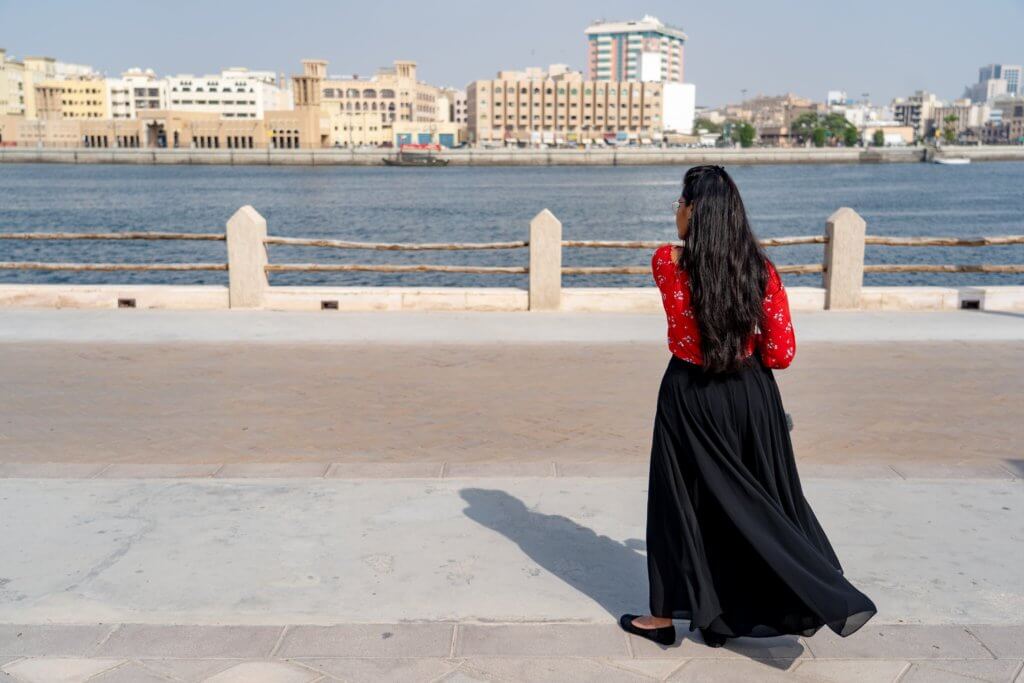
Find out why a few refer to it as ‘a land that is surrounded by war zones yet by some miracle remains blissfully peaceful’ or ‘a city that has emerged almost overnight out of the desert like a mirage’. Once you read this blog, you’ll know how little you actually need to part with to appreciate this rare gem of a country. You know what they say, ‘the best things in life are for free?’ This statement is truer here in Dubai than anywhere else.
Understanding UAE and Dubai Ancient History
The history of the United Arab Emirates, UAE dates all the way back to 124,000 B.C. With burial sites going all the way to the Neolithic Age and the Bronze Age, including the oldest known such inland site at Jebel Buhais. The Sumerians knew it as Megan. It was home to a prosperous Bronze Age trading culture during the Umm Al Nar period which traded between the Indus Valley, Bahrain and Mesopotamia as well as Iran, Bactria and the Levant.
Following decades of maritime conflict, the coastal emirates became known as the Trucial States with the signing of the General Maritime Treaty with the British in 1820. This established the Trucial States as a British Protectorate. However, on 2nd December 1971, this arrangement ended with the gaining of independence from the British and all treaty obligations were withdrawn.
The United Arab Emirates was then established and six emirates joined the UAE in 1971; the seventh, Ras Al Khaimah, joined the federation on 10 February 1972. The major source of income for communities of the Arabian Peninsula was the pearl industry. However, it collapsed in 1930 due to the popularity of artificially-crafted pearls. The communities that depended on fishing and pearling had to look for new sources of income.
Air Links to the Region
It was shortly after this that the first air links to the region were established. In 1932, Shaza became a vital stop for airplanes on routes from Great Britain to India and on to Australia. The airstrip’s fort would protect against rains, although today the site is a museum displaying aircraft that served the region. Shaza has grown from its humble beginnings into a major city. The original dusty airstrips have grown into glimmering modern airports linking the UAE to every city in the world.

In 1958, Oil was discovered in commercial quantities, and the development of this abundant resource began shortly afterward. In fact, it was in 1962 that the Esso Dublin loaded the first cargo of crude oil. The oil wealth was put into use in improving the infrastructure. The city of Abu Dhabi embarked on a wave of construction. Soon the shoreline dramatically changed, with its oldest building, Al Hosn, or the White Fort which was erected in 1798 being the most prominent landmark in the city.
Growth of UAE
Today, it is undergoing restoration and is surrounded by skyscrapers of Abu Dhabi. The city is still developing and growing and it is well worthy of its place as a capital. With pearls no longer able to supply vital income, the resilient city of Dubai turned to trade to restore its fortune. The Dubai creek, which was traditionally the centre for business, was dredged in the 1960s to allow larger dhows to navigate the waterways. This allowed the city to continue to grow as an important commercial hub. Dhows laden with goods are still a common feature on the city’s creek, a historical link between the old and the new.
An increase in demand saw the first man-made port being created at Jebel Ali. Its ever-crowded docks are testaments to the valuable role it now plays at the centre of regional trade. These successful commercial links have brought great change to the city of Dubai. Wide highways and metric systems have grown from once crowded and narrow alleyways barely wide enough to accommodate donkeys and camels. The city also boasts of record-breaking skyscrapers and developments that are the icons of the city. Inland in the emirate of Abu Dhabi lies the oasis of Al Ain. Before 1971, the city was a base for the Trucial Omani scouts who would patrol the area while on camels. Quite some ancient history, don’t you agree?
How expensive Is It To Visit Dubai?
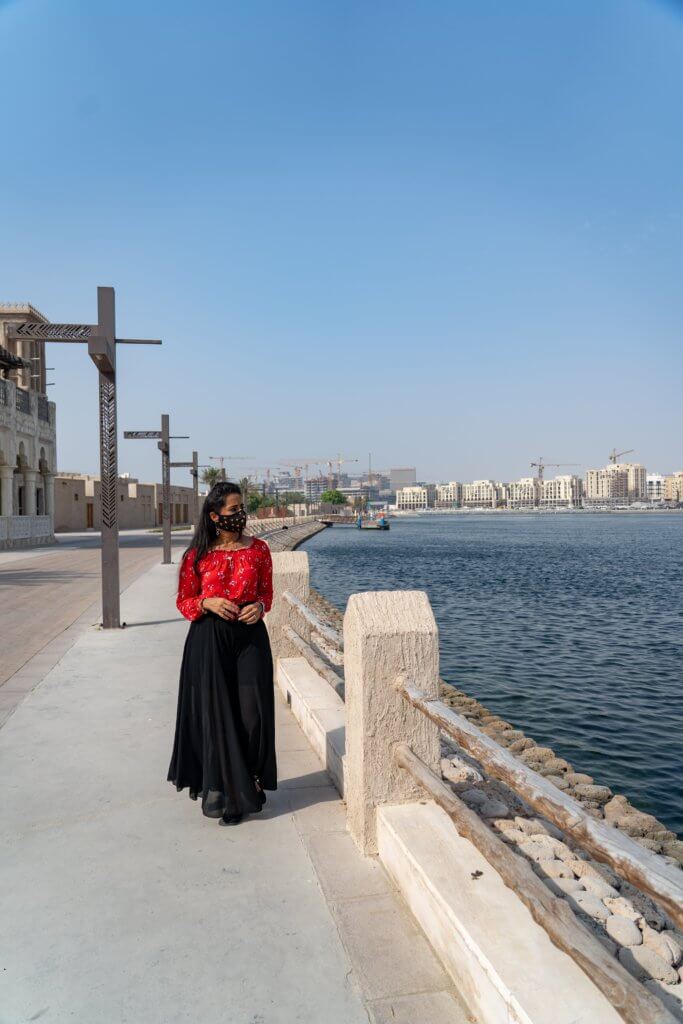
Now, how expensive is it to visit Dubai and experience this rich cultural diversity and even learn more about this ancient history for yourself? In particular, I am going to take you to three different places which, capture the essence of Dubai. Heritage Village, Coffee museum and the Meena Bazaar
What is Meena bazaar, you are probably wondering? Well, keep reading to find out.
Heritage Village
The Heritage Village was built in 1997. It’s located in Al Shindagha, next to the Diving Village, to display a live image of the local traditional lifestyle of UAE. The Dubai Heritage village preserves a sense of old Dubai through its construction of stone buildings, and tents laid out in a traditional village setting.
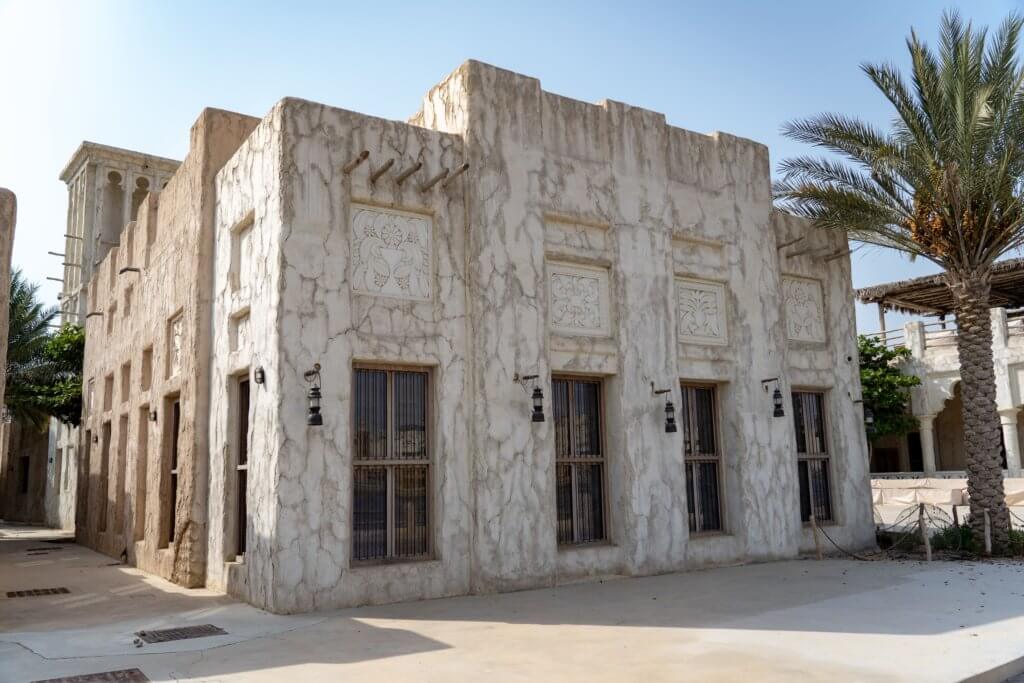
It felt like going back to the time when locals were living simpler lives, handcrafting beautiful pieces, and seeping coffee. In the winter season, there are attractions such as traditional cooking demonstrations, pot-making, etc. This is a great place to see the traditional Dubai life. The visiting hours are Sunday to Thursday from 8 am to 10 pm and Friday and Saturday from 3 pm to 10 pm. If you want to get a sense of how traditional Dubai was, this is a great place to visit. In fact, if the weather favors you and the season is right, you can spend lots of time here.
Coffee Museum
Next up is the coffee museum, which is located inside the Bastakiya, another historical district in Dubai. The timings for the Coffee Museum are 9 am to 5 pm. So if you wish to enjoy this place comfortably, it’s best to arrive prior to that.
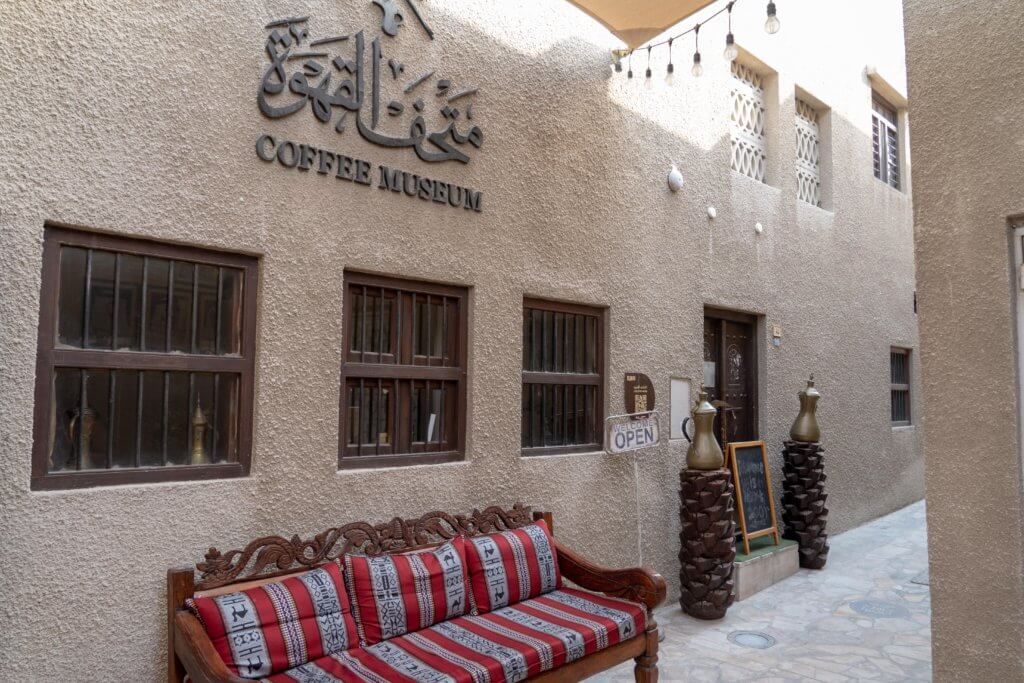

With the entry priced at $2.75 per person, I am certain that anyone still asking how expensive is it to visit Dubai will surely feel relieved. Its beautiful interior will usher you in with cool air-conditioning. It is a great relief since the temperatures outside can rise to 48 to 49 degrees!
The coffee museum as the name suggests is a place that will help you appreciate how important coffee is to the UAE. If you are a coffee lover, you definitely want to visit this place. Even though no one will put pressure on you to buy coffee, you should definitely try one, or two. I guarantee you that you will love the experience.
History of Coffee
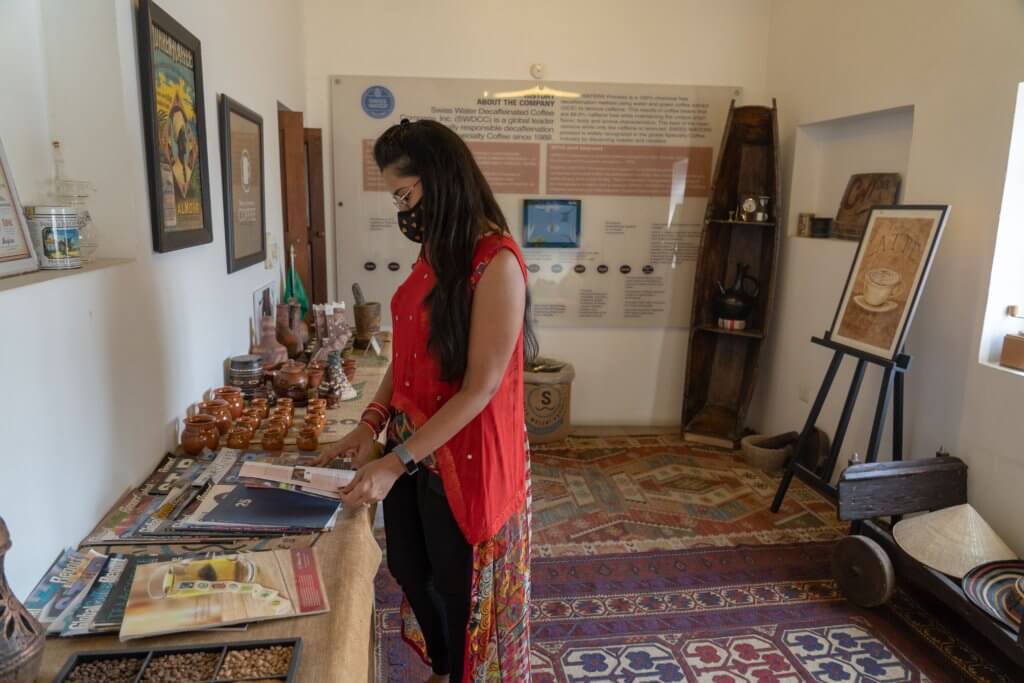
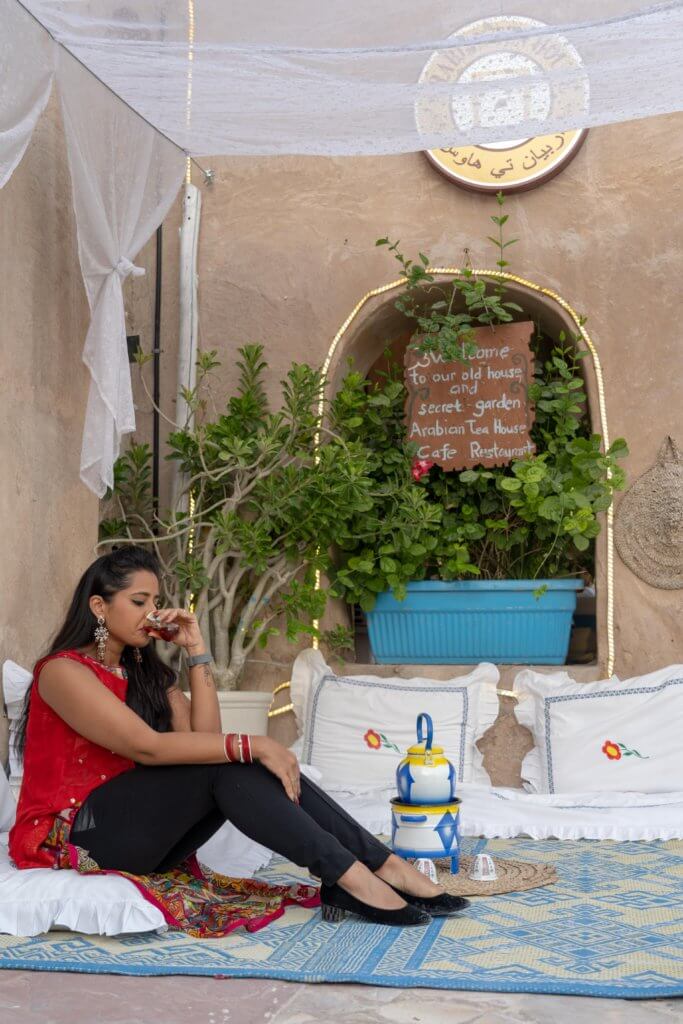
The history of the coffee museum in Dubai started in the Ethiopian highlands hundreds of years ago. Best captured by the legend of Kaldi, which says that a goat ate some unknown berries from a tree and then remained alert through the night. The worshippers from the local monastery prepared a drink with these berries. This drink helped them remain awake throughout their long hours of prayer.
This discovery spread so rapidly that it reached the Arabian Peninsula, where the Arabs had taken this newfound drink, Coffee, to the rest of the world.
Dubai’s coffee museum is a coffee lovers’ paradise tucked away in a neighborhood inside Bastakiya. You can enjoy a warm cup of coffee, either Ethiopian, local or Turkish, upon entry. It is the first ever coffee museum concept in the Middle East.
Now let’s briefly explore Bastakiya itself, the place in which the coffee museum is located.
Bastakiya
Bastakiya dates back to the 1890s. It is one of the oldest areas of Dubai. This Historic District was supposed to be demolished a couple of times, but that did not happen. It was restored and renovated in 2005. When you walk through these lanes, one might really wonder how expensive is it to visit Dubai? This district reflects how simple and sober traditional lifestyle was of Dubai.
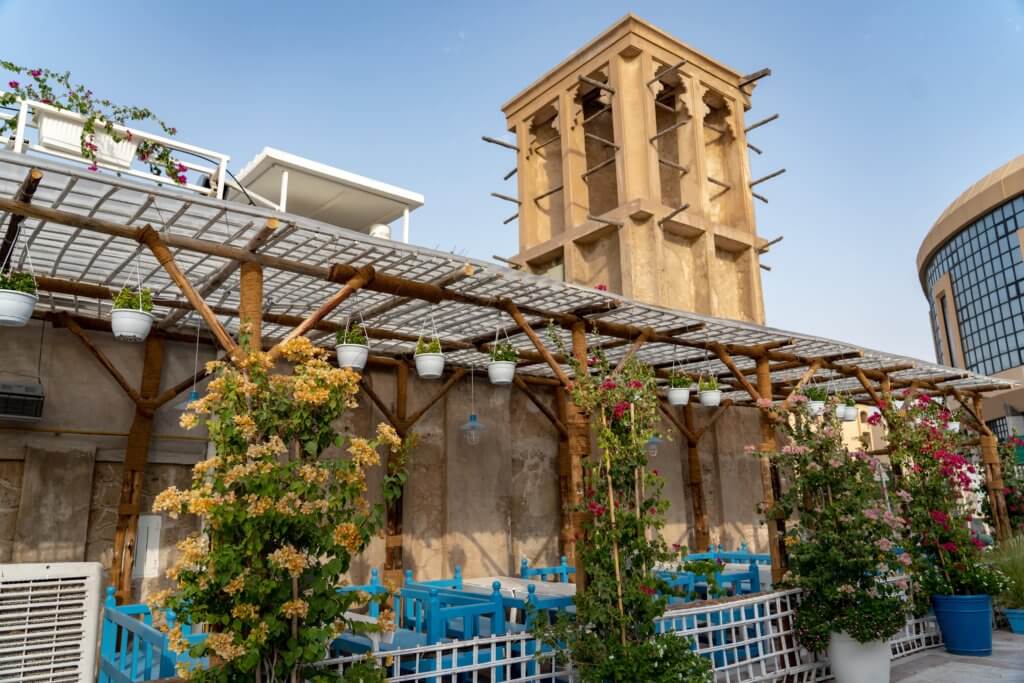
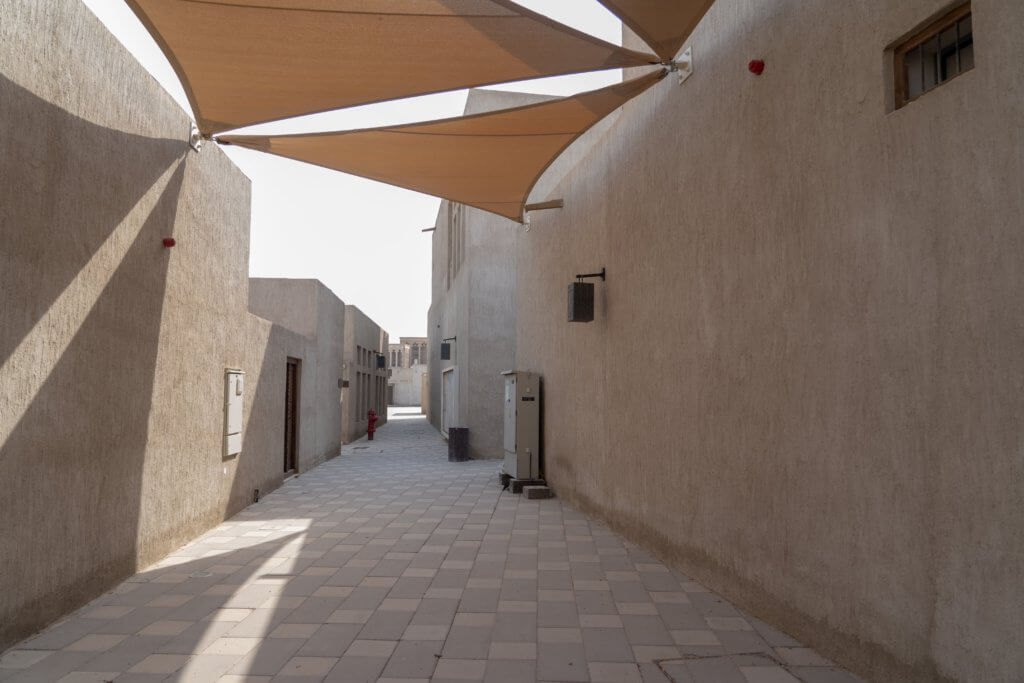
Back in the day, people used to live here. Their houses have now been converted into restaurants, cafes, and museums like the coffee museum we were exploring just now. The entire area is really charming and beautiful and has little corridors, which you can walk through. Since I grew up in Dubai, I spent long hours wandering through this little village.
Since my major was photography, I spent most of my time in this area for most of my projects. It is a place I would recommend if you want to take great, authentic, traditional – looking pictures in Dubai for your Instagram.
Meena Bazaar
Our last stop, which is by no means the least, is the Meena Bazaar, which is like a little India in Dubai. If you love India and Dubai, there is no better way to experience them both than in this textile market. If you have not visited this place before, you may wonder, where is Meena bazaar in Dubai?
Well, Meena Bazaar is located in Bur Dubai, the heart of Dubai, and is your go-to market for traditional textiles, gold, jewelry, and handicrafts. It is just a five-minute drive from Bastakiya and is great for shopping.
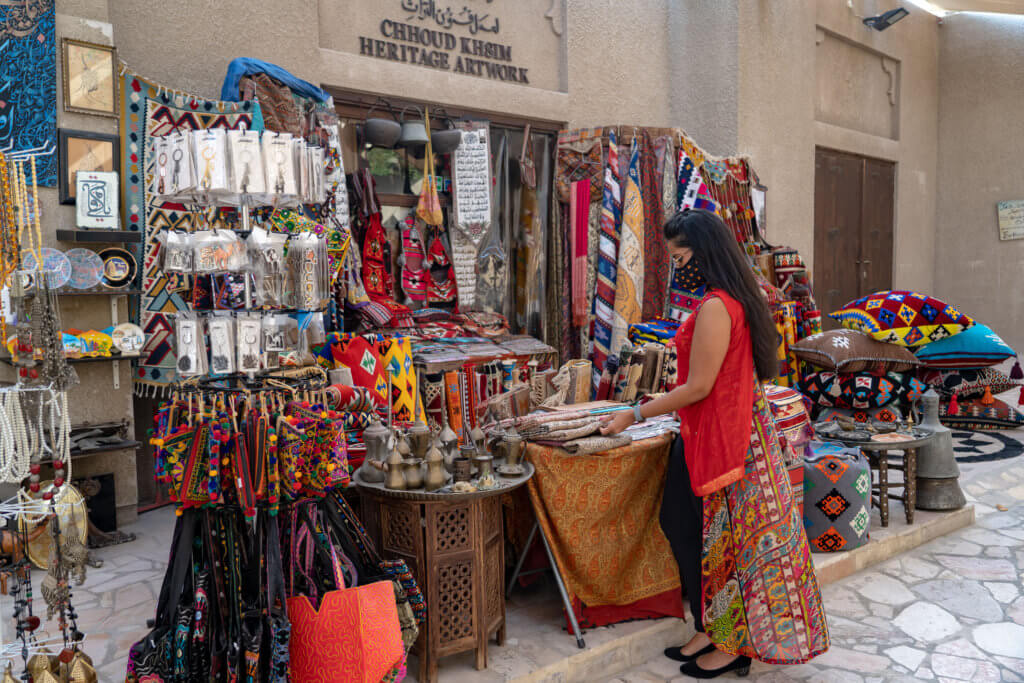
In fact, you will find anything here, from hardware stores, spices, textiles, clothing, fabrics, western wear, you name it. You will find literally anything here in the Meena Bazaar. So, if you don’t wish to visit the big multi-level mall to shop this is the perfect place for you to come and explore. The weather is so nice that you can spend an entire day here. Even if you don’t shop, it’s just the perfect place to experience the heart of Dubai.
Due to the extreme weather in Dubai, some parts of this market have been covered to make them air-condition friendly. Shopkeepers and customers can shop with ease without feeling the extreme heat.
Conclusion
So how expensive is it to visit Dubai? As you have seen for yourself, travel to these places is so affordable. With almost all of them having zero entry fees, I bet you wouldn’t feel any impact on your pocket during your visit to Dubai. So how about you get packing and fly over to Dubai right now? This was part one. I am going to write more about Dubai, especially about aspiring travelers to Dubai on a tight budget who would like to explore the places I have mentioned as well as the rest of Dubai.
In case you start packing right away, head to my blog about the latest Dubai travel guidelines


